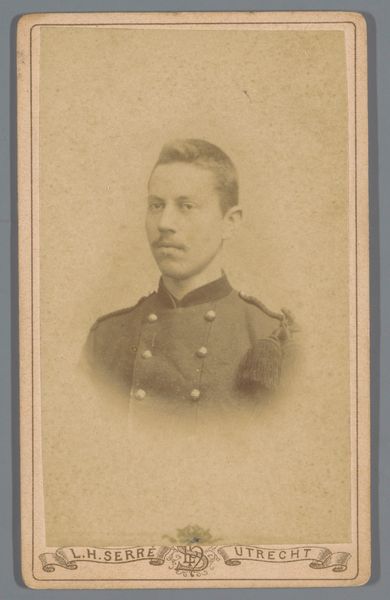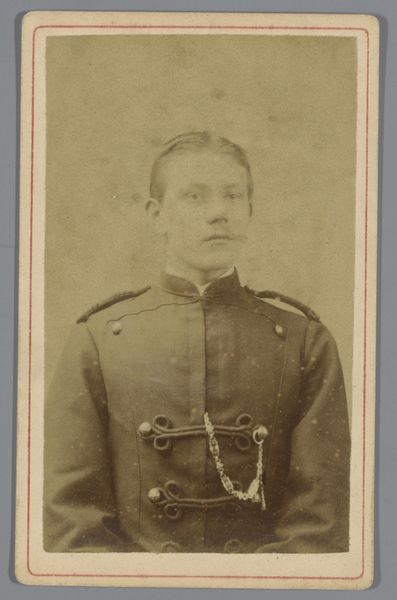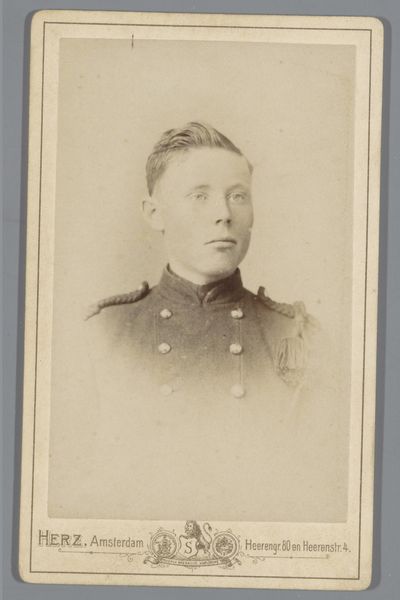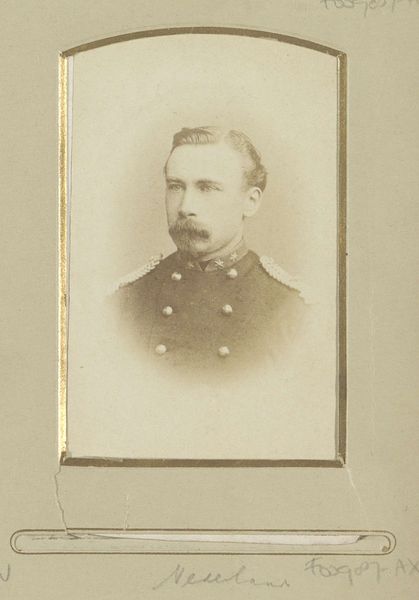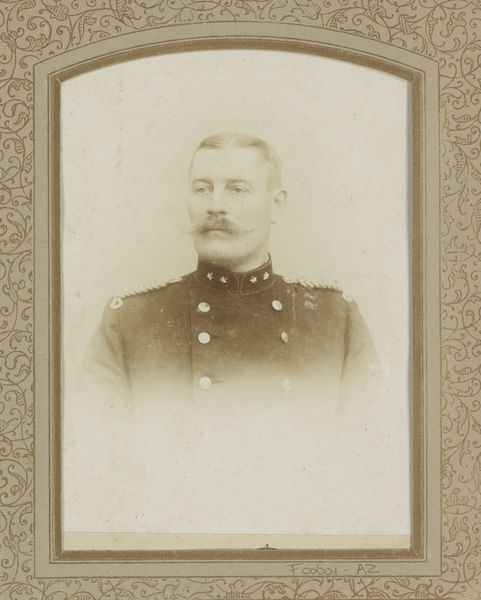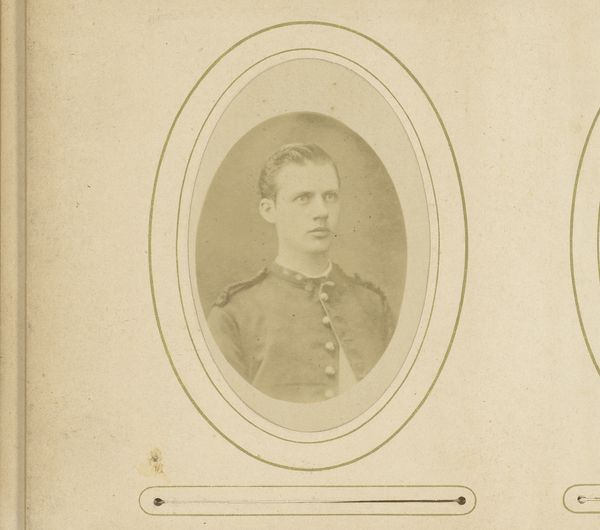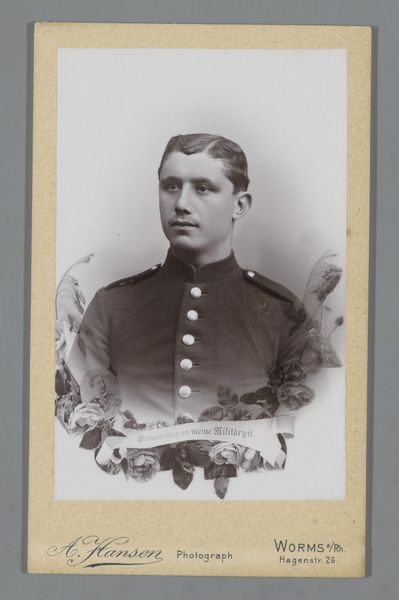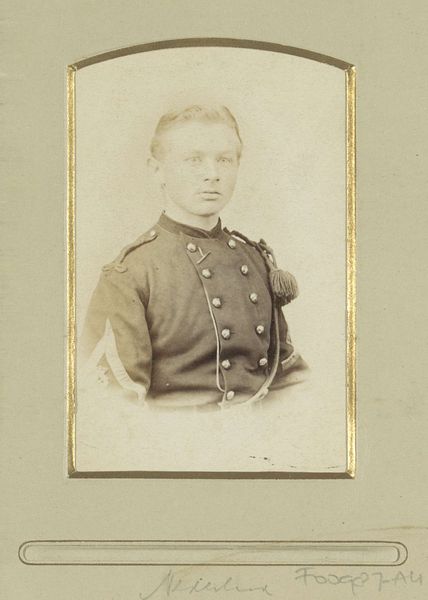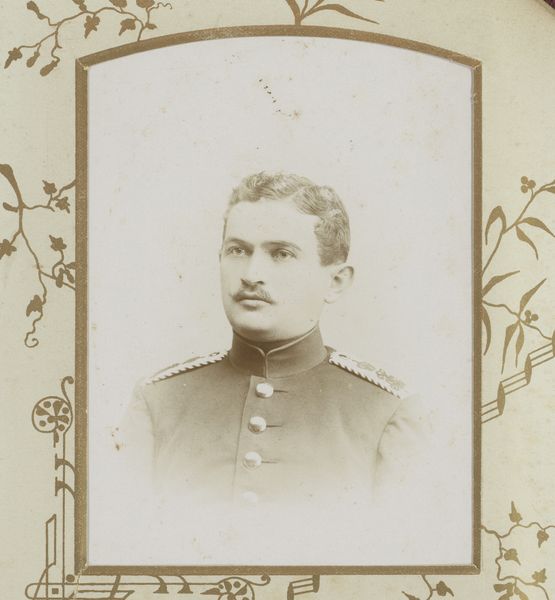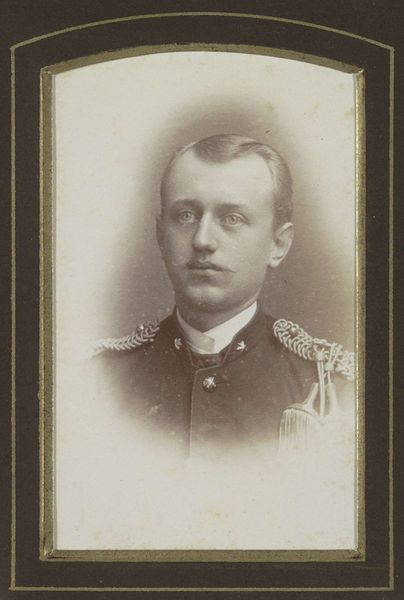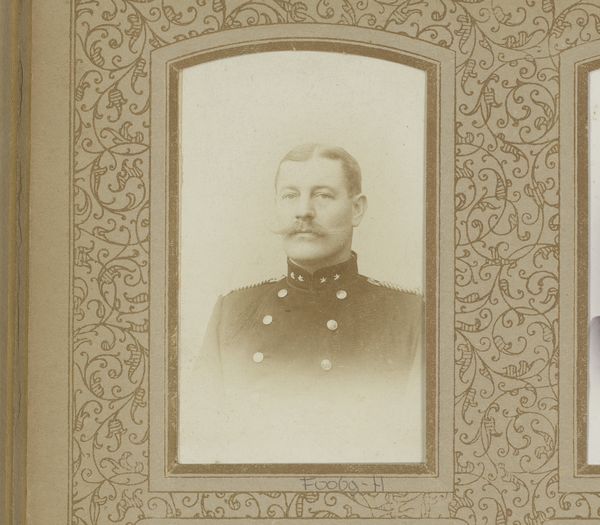
photography
#
portrait
#
photography
#
genre-painting
Dimensions: height 104 mm, width 64 mm
Copyright: Rijks Museum: Open Domain
Editor: Here we have Willem Hooijer's "Portrait of a Young Man in Uniform," a photograph likely taken between 1892 and 1910. The oval frame really emphasizes the sitter's formality. What stands out to you about this portrait? Curator: It's a potent image precisely because of that formality. It invites us to consider the relationship between representation and power. What does it mean to be captured, to be framed – literally and figuratively – in this era of rising nationalism? Is the subject a willing participant, or a cog in a system? The uniformity of the uniform suppresses individuality, yet photography promises a kind of truth. Editor: That makes me see it in a new light. I was so focused on the individual, but now I’m thinking about the larger structure. Does the anonymity granted by the uniform also signal an erasure of the subject’s own desires or ambitions? Curator: Exactly. And how might race, class, and gender intersect here? The limited tonal range of early photography might flatten some details but it also highlights structure, almost creating an archetype. Who are the people erased by such narrow focus and definition of self, nation, and identity? How do we amplify marginalized voices through this reading? Editor: So, it's not just a portrait of a young man, but a reflection of larger societal forces at play during that time. A commentary on personhood within the political landscape. Curator: Precisely! It's about acknowledging the complex ways identity is performed and, at times, imposed. Examining the history of such imagery challenges us to understand representation within its socio-political context. It shows the potential for portraits such as this to move us into questions of resistance and perhaps a move to demand liberation of all sorts. Editor: I hadn’t thought of it that way. Now I see how a simple portrait can become a powerful tool for understanding broader societal dynamics and can highlight inequality and promote action. Curator: Indeed. Each encounter with art can refine our critical lens, hopefully guiding our perception of not just art history but history and current societal dynamics, generally.
Comments
No comments
Be the first to comment and join the conversation on the ultimate creative platform.

